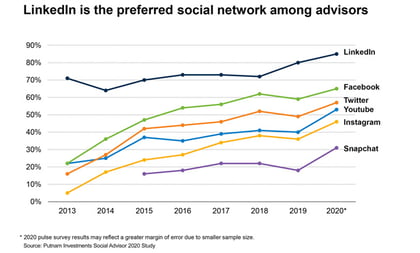It might be the silver bullet of prospecting.
LinkedIn is the social media site for professionals.
(Related: Social Media Bolsters Advisors’ Work During the Pandemic)
You can target audiences. People come to you! It has enormous potential for raising your visibility and establishing yourself as a subject matter expert. It’s also very easy to annoy people.
1. The Generic Invitation
You get these all the time. “I admire what you do. We share connections. Let’s connect.” A couple of days ago, I actually got one that included the text “Insert name here.” Clearly, this was untouched by human hands.
2. Vague Geography
Most LinkedIn profiles list the person’s city and state. The location might be a little general, like “Los Angeles area.” That’s fine. But I get suspicious when persons show their location as “United States” and their work history lists no cities.
3. Conflicting Geography
Recently I came across a profile of a person showing New York, New York, as the location, yet the location of the firm, where the person has worked for years, was in Singapore. Is that person in New York or Singapore?
4. Catch and Release Prospecting
Before you accept a LinkedIn connection, you review the person’s profile and make a decision. I’m open minded. I might not need a person’s product or service, but we can learn from each other. I connect. I might message, “I don’t see a business overlap, but I’m happy to connect.” The next day, you are dropped. That’s not relationship developing; it’s cold calling via social media.









 December 11, 2020 at 01:21 AM
December 11, 2020 at 01:21 AM












 Bryce Sanders is president of
Bryce Sanders is president of